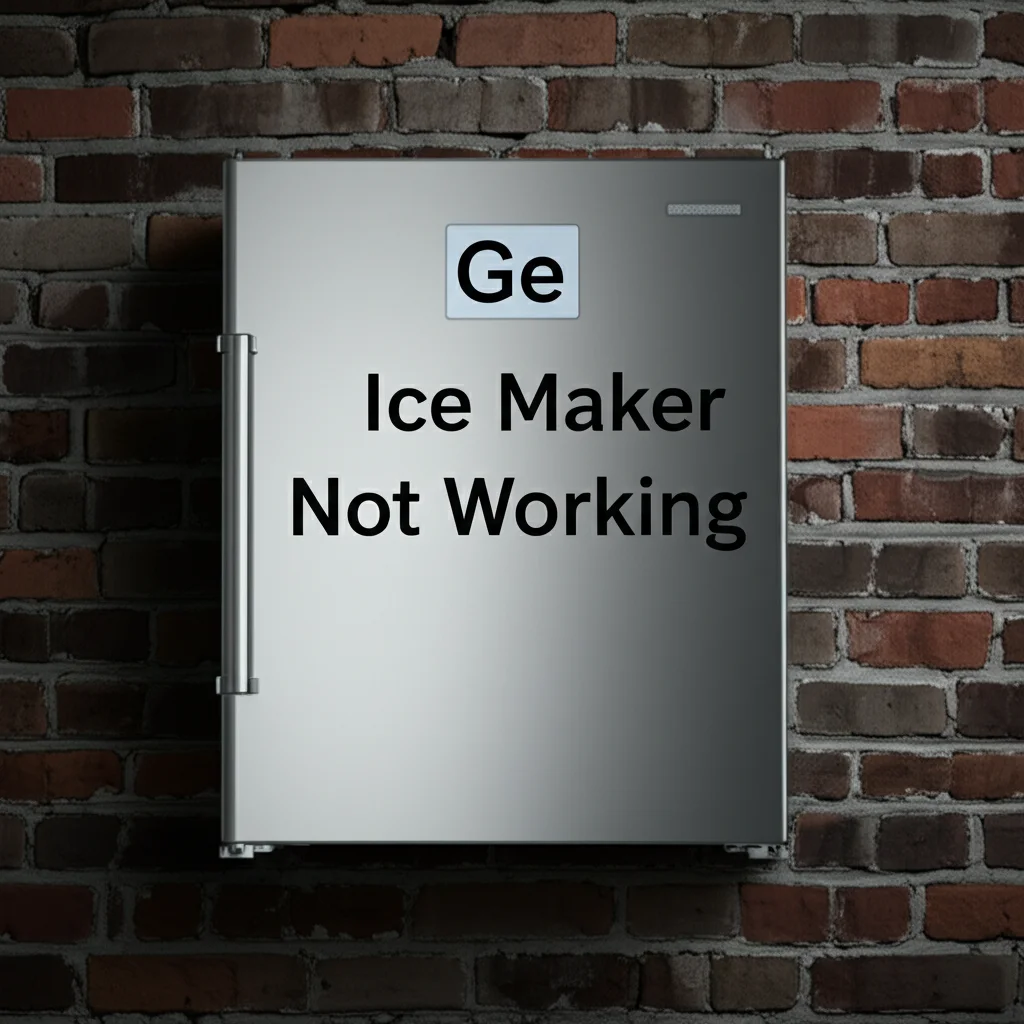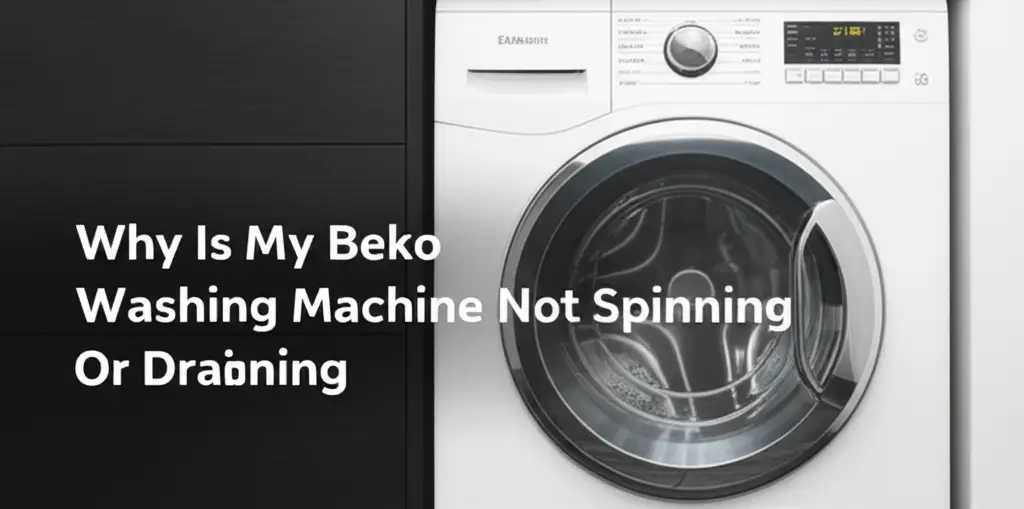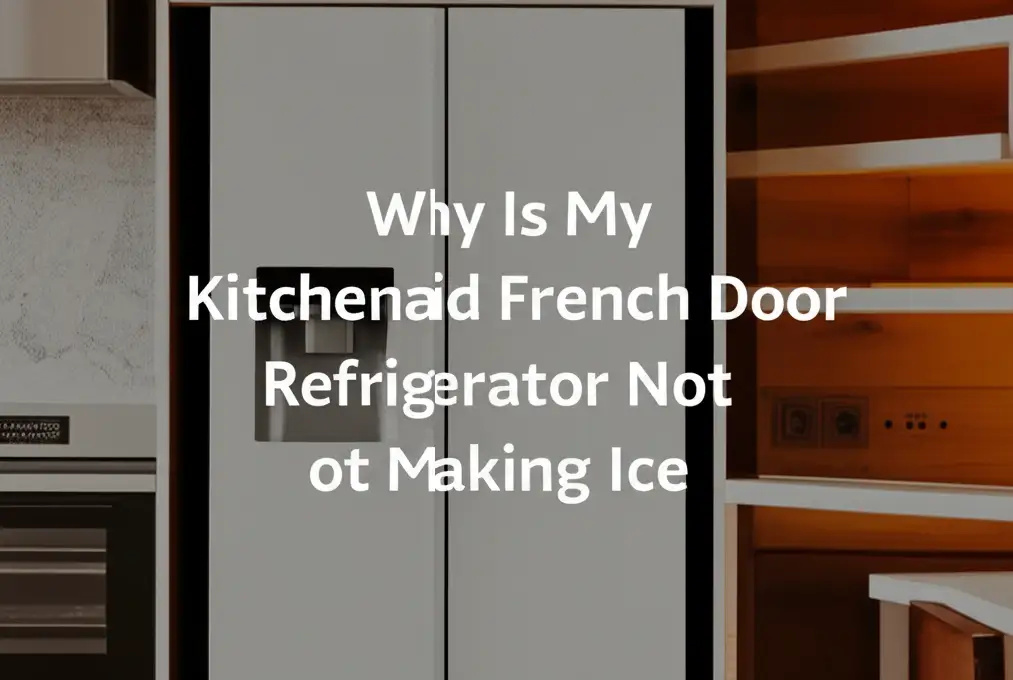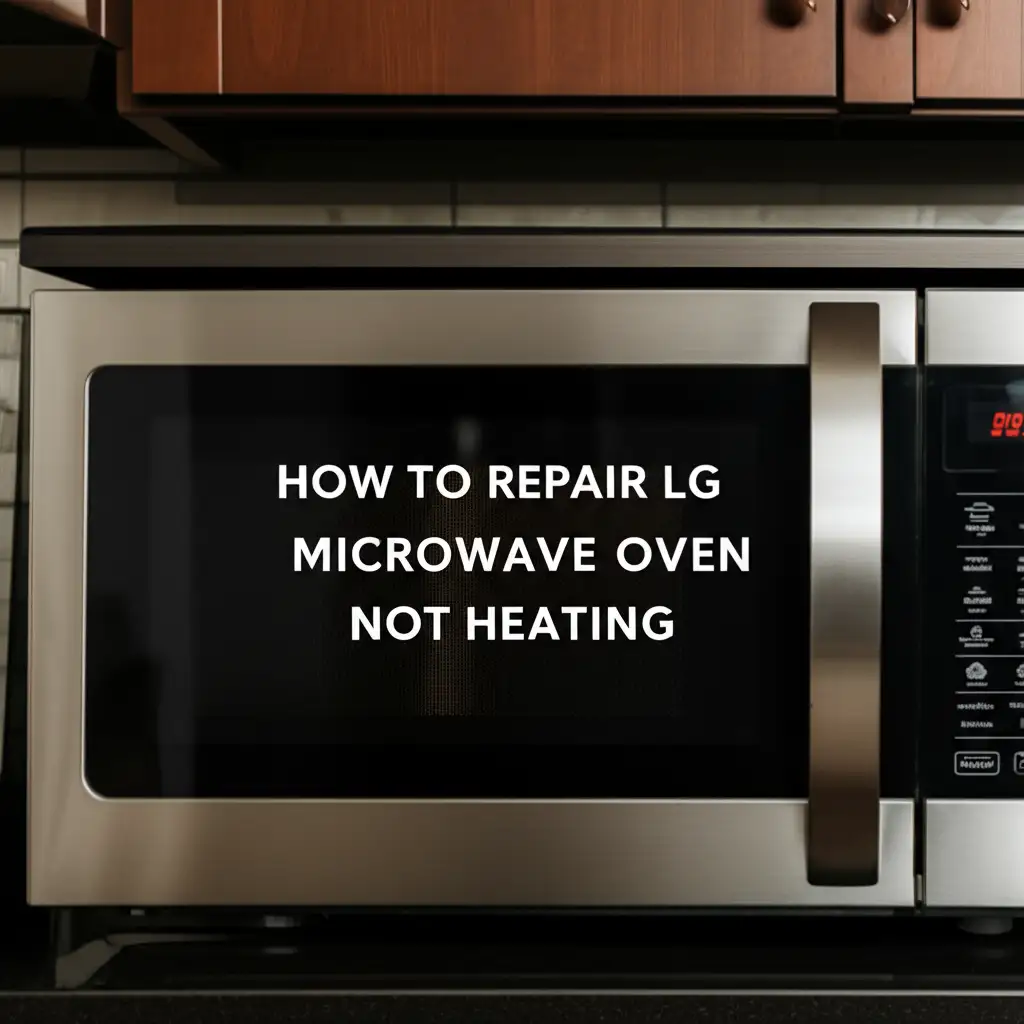· Todd Martin · Home Appliances · 20 min read
Ge Ice Maker Not Working

Fix Your GE Ice Maker: Troubleshooting When It’s Not Working
There is nothing quite as frustrating as needing ice and finding your ice maker has stopped. Many GE refrigerator owners face this very issue. A GE ice maker not working can ruin a cool drink or a party. I have been there myself, staring at an empty ice bucket.
The good news is that many problems with a GE ice maker are simple to fix. You do not always need a technician. This guide will walk you through common reasons why your GE ice maker stops working. We will cover straightforward diagnostic steps and offer practical solutions. You will learn to identify the issue and restore ice production. Let us get your GE ice maker back to making ice.
Takeaway
When your GE ice maker stops working, these are the key steps:
- Check power and reset: Ensure the ice maker is on and try a simple reset.
- Verify water supply: Look for kinks in the water line and check the water filter.
- Clear blockages: Inspect the water fill tube and the ice maker’s output for ice clogs.
- Inspect mechanical parts: Check the auger and feeler arm.
- Confirm freezer temperature: Ice makers need specific cold temperatures to operate correctly.
Main Query Answer
A GE ice maker not working often results from a lack of power, blocked water supply, a clogged filter, or a frozen water fill tube. Issues with the ice maker’s feeler arm, optics, or the freezer temperature also stop ice production. Simple troubleshooting can fix most problems.
Diagnosing No Power or Reset Needs for Your GE Ice Maker
When your GE ice maker is not working, the first step is to check its power status. Sometimes, the issue is as simple as the ice maker being turned off. GE ice makers often have a control arm or a power button. You need to ensure it is in the “on” or “down” position. If this arm is up, it signals the ice maker to stop making ice. This can prevent it from producing any new cubes.
Another common problem is a need for a quick reset. Just like your computer, an ice maker can sometimes benefit from a power cycle. This helps clear minor glitches in the system. I have found this fix works more often than you would think. You can reset your GE ice maker easily.
To perform a reset, you need to unplug the refrigerator. Wait for about five minutes. This allows the internal components to fully discharge any residual power. After the waiting period, plug the refrigerator back in. This step often resolves electrical or sensor issues. It can kickstart your ice maker back into operation. Give it a few hours to start making ice again after a reset. The first batch might take some time.
Check the Ice Maker’s Control Arm/Switch:
- Locate the metal control arm or the “on/off” switch on your GE ice maker.
- Ensure the arm is in the “down” position. This tells the ice maker to produce ice.
- If it is a switch, make sure it is set to “on.”
- Sometimes, an overfilled ice bucket can push the arm up. Remove excess ice to allow the arm to drop.
Perform a Power Cycle Reset:
- Unplug your GE refrigerator from the wall outlet.
- Wait for a full five minutes. This step is crucial for a complete reset.
- Plug the refrigerator back into the outlet.
- Listen for sounds from the ice maker. It might start a fill cycle.
- Allow several hours for the ice maker to begin producing ice. The temperature must stabilize.
These simple checks are a vital starting point. They address the most basic reasons why your GE ice maker might not be working. Do not overlook these initial steps. They can save you time and money. If these steps do not help, move on to checking the water supply.
Addressing Water Supply Problems for GE Ice Makers
A GE ice maker needs a steady flow of water to produce ice. If your GE ice maker is not working, the water supply is a common culprit. Many issues can interrupt this flow. A kinked water line is a very frequent problem. This tube brings water from your home’s main supply to the refrigerator. If it gets bent or squashed, water cannot reach the ice maker.
You should check the water line behind your GE refrigerator. Pull the refrigerator away from the wall carefully. Look for any bends or twists in the flexible plastic or copper line. Straighten any kinks you find. Also, ensure nothing is pressing against the line. This can stop the water flow.
Another major component is the water filter. GE refrigerators use filters to clean the water before it reaches the ice maker. A clogged or expired water filter significantly reduces water pressure. Sometimes, it can block water flow entirely. If you cannot remember the last time you changed your filter, it is probably time. I always recommend keeping a spare filter on hand.
Inspect the Water Line:
- Carefully pull your GE refrigerator out from the wall.
- Locate the thin water line running to the back of the appliance.
- Check for any visible kinks, bends, or crimps in the line.
- Smooth out any kinks you find. Make sure the line has enough slack.
- Ensure the water shut-off valve, usually located under the sink or behind the fridge, is fully open.
Replace the Water Filter:
- Find your GE refrigerator’s water filter. It is usually inside the fridge, on the top, or in the base grille.
- Follow your GE model’s specific instructions for removal.
- Replace the old filter with a new, genuine GE filter.
- After replacing, flush the system. Dispense several gallons of water through the refrigerator’s water dispenser. This purges air and carbon particles from the new filter.
- A common sign of a clogged filter is slow water dispensing or no ice production.
Ensuring a clear and adequate water supply is crucial. Without water, your GE ice maker simply cannot make ice. This step is often the solution to many ice maker issues. If water supply is good, the problem lies elsewhere.
Resolving Clogged Water Lines or Frozen Fill Tubes
Even with a good water supply, a GE ice maker can stop working if the internal lines are blocked. The water enters the ice maker through a small fill tube. This tube often freezes solid. When this happens, no water can reach the ice mold. This is a very common reason for no ice production. I have seen this issue many times.
To check for a frozen fill tube, you need to open the freezer door. Locate the ice maker unit. Look closely at the small, clear tube that delivers water into the ice mold. If you see ice completely blocking the end of this tube, you have found your problem. This blockage often happens due to low water pressure. It can also happen if the water valve drips slowly. The slow drip allows water to freeze before it enters the mold.
You can thaw a frozen fill tube. First, turn off the ice maker and shut off the water supply to the refrigerator. Use a hairdryer on a low setting to gently warm the tube. Keep the hairdryer moving to prevent overheating. A warm, damp cloth can also work. Be patient and allow the ice to melt completely. Do not use sharp objects to chip away ice. This can damage the tube.
Locating and Thawing a Frozen Fill Tube:
- Open your freezer door and remove the ice bucket.
- Find the water fill tube. It is a small plastic tube. It enters the back of the ice maker assembly.
- If you see ice blockage inside or at the end of this tube, it is frozen.
- Unplug the refrigerator or turn off the ice maker power.
- Use a hairdryer on a low-heat setting to gently warm the tube. Keep it moving.
- Alternatively, place a warm, damp cloth over the frozen section.
- Wait for all the ice to melt. This might take some time.
- Once thawed, you may want to clean the entire ice maker to ensure no other blockages. Cleaning your refrigerator ice maker can prevent future freezes.
Check for Clogs in the Dispenser or Chute:
- Sometimes, ice cubes can clump together. They form a blockage in the dispenser chute.
- Use a plastic spatula or wooden spoon to gently clear any visible ice jams in the chute.
- Never use your hand. There are moving parts.
- Ensure the ice maker area itself is clean. Keeping your ice maker clean is important for smooth operation.
After thawing, turn the water supply back on. Then, turn the ice maker back on. It should begin producing ice within a few hours. If the problem reoccurs, investigate your water pressure. Low pressure can cause constant refreezing.
Troubleshooting Malfunctioning Ice Maker Components (Feeler Arm, Optics, Auger)
If your GE ice maker is still not working after checking power and water, internal components might be at fault. Modern GE ice makers use various parts to detect ice levels and eject cubes. The feeler arm, optic sensors, and the auger motor are common points of failure. Understanding their role helps with troubleshooting.
The feeler arm is a metal arm that drops down into the ice bucket. It senses when the ice bucket is full. If the bucket is full, the arm rises and tells the ice maker to stop production. If this arm is stuck in the “up” position, the ice maker thinks the bucket is always full. It will not make any ice. Check if the arm moves freely. Make sure no ice cubes are blocking its movement.
Many GE ice makers use optic sensors (also called infrared sensors). These are small light beams located on the inside walls of the freezer, near the ice maker. One sensor sends a light beam, and the other receives it. If ice blocks this beam, the ice maker thinks the bucket is full. It stops making ice. Sometimes, dirt or frost can cover these sensors. This can give a false “full” signal. You can clean these sensors with a warm, damp cloth. Just gently wipe them to remove any debris.
The auger motor is responsible for rotating the auger that pushes ice out. If the auger motor fails, ice cubes will stay stuck in the ice maker. No ice will dispense. You might hear the motor try to run but nothing happens. Or you might hear no sound at all. This often requires a part replacement. If you see ice but it is not coming out, the auger or its motor is likely the issue.
Check the Feeler Arm:
- Locate the thin, metal feeler arm on your GE ice maker.
- Manually push the arm up and down. It should move freely without resistance.
- Ensure no ice cubes or debris are trapped around the arm.
- If the arm is bent or broken, it might need replacement.
Clean the Optic Sensors:
- Identify the small, clear or black plastic lenses on the side walls of your freezer, usually at the height of the ice maker.
- These are the optic sensors. They must have a clear line of sight.
- With a clean, warm, damp cloth, gently wipe both sensors.
- Remove any frost, ice buildup, or dirt that might be covering them.
- Do not use harsh cleaners. A simple cleaning of the sensors can often resolve the issue.
Inspect the Auger and Motor:
- Remove the ice bucket. Look at the auger mechanism inside the ice maker.
- Check for any ice jams around the auger blades. Break up any clumps of ice.
- If you hear a humming sound but no ice movement, the auger motor might be strained or failing.
- If the auger is visibly broken, or the motor does not turn, professional help might be needed. Sometimes, a general ice machine cleaning can prevent issues.
These components are vital for the ice maker’s automation. If any of them are not working right, your GE ice maker will stop producing ice. A thorough check of these parts is important.
Ensuring Proper Freezer Temperature for Ice Production
The temperature in your freezer plays a direct role in how your GE ice maker functions. If the freezer is too warm, the water will not freeze. This means no ice cubes. If it is too cold, sometimes the ice can get too hard or clog the system. The ideal temperature for most freezers is between 0°F and 5°F (-18°C and -15°C). Your GE ice maker expects this range to work correctly.
Many people unknowingly set their freezer temperature too high. This often happens to save energy or if food seems fine. However, ice makers need very cold temperatures to cycle properly. Water takes longer to freeze at warmer settings. This can lead to slow ice production or no ice at all. It can also cause the water fill tube to freeze over, as mentioned earlier. The water drips slowly and freezes before it forms cubes.
You should use a freezer thermometer to check the actual temperature. Relying on the thermostat dial setting is not always accurate. Place the thermometer in the center of the freezer overnight. Check the reading in the morning. If the temperature is outside the optimal range, adjust your freezer’s thermostat. Give it a full 24 hours to stabilize after any adjustment.
Verify Freezer Temperature:
- Purchase an inexpensive freezer thermometer.
- Place the thermometer in the middle of your GE freezer.
- Leave it there for at least 8-12 hours, preferably overnight, for an accurate reading.
- The ideal temperature range is 0°F to 5°F (-18°C to -15°C).
- If the temperature is too high, lower your freezer’s thermostat setting.
- If it is too low, raise the setting slightly. Very low temperatures can also cause problems, making ice too hard to eject.
Check Freezer Door Seal:
- A faulty door seal lets warm air into the freezer. This raises the temperature.
- Inspect the rubber gasket around the freezer door. Look for cracks, tears, or gaps.
- Close the door on a piece of paper. If you can pull the paper out easily, the seal is weak.
- Clean the door seal with warm, soapy water. Dirt can make it less effective.
- Replace a damaged door seal. This improves efficiency and ice maker performance.
Proper freezer temperature is a fundamental requirement. Your GE ice maker cannot perform its task if the environment is not cold enough. This simple check can save you from more complex troubleshooting.
Addressing Ice Dispenser and Bucket Issues
Sometimes, your GE ice maker is making ice, but it is not dispensing. This means the problem lies with the ice dispensing system, not the ice making unit itself. This can be just as frustrating. You see ice, but you cannot get it out. Common issues include ice jams in the chute or problems with the dispenser paddle.
Ice can sometimes clump together in the storage bucket or the dispenser chute. This forms a solid block. This block prevents new ice from forming or dispensing existing ice. Large, irregular ice cubes can also cause a jam. If the ice maker produces too much frost, this can also lead to blockages. A frozen cube stuck in the chute can prevent the paddle from moving.
You can often clear these jams yourself. First, unplug the refrigerator for safety. Then, remove the ice bucket. Look into the dispenser chute. Use a plastic utensil or a wooden spoon to break up any visible ice clumps. Never use your hand or a metal object. These can damage the auger or cut you. If you clean the refrigerator regularly, including the dispenser, it helps prevent these issues. Cleaning your ice maker dispenser is a good maintenance step.
Clear Ice Jams in the Chute:
- Unplug the refrigerator or turn off the power to the ice maker.
- Remove the ice bucket from the freezer.
- Look up into the ice dispenser chute from the front of the door.
- Use a sturdy plastic or wooden utensil to gently break apart any visible ice clumps.
- Ensure the pathway is clear of all obstructions.
- If the ice maker has mold issues, clear them. Cleaning mold from a portable ice maker can involve similar steps for clearing blockages.
Check the Dispenser Paddle/Lever:
- Ensure the dispenser paddle or lever moves freely.
- Sometimes, food debris or crumbs can get stuck behind the paddle. This prevents it from activating the dispenser switch.
- Clean around the paddle area. Make sure it returns to its neutral position easily.
- Press the paddle firmly to test if it activates the internal switch. You should hear a click or the auger motor engage.
Inspect the Ice Bucket:
- Check the ice bucket for any cracks or damage. A damaged bucket might not sit correctly.
- Ensure the bucket is properly seated in its slot. If it is not aligned, the auger might not engage.
- Sometimes, excessive frost buildup in the bucket or around the auger can hinder operation. Defrost the freezer if needed.
These dispenser-related issues are different from the ice maker not producing ice. But they lead to the same result: no ice when you need it. Regular cleaning and checks can prevent these blockages.
When to Call a Professional for Your GE Ice Maker
You have tried all the troubleshooting steps, but your GE ice maker is still not working. At this point, it might be time to call a professional. Some problems are more complex. They require specialized tools or knowledge. Attempting these repairs yourself can be risky. It can also cause more damage to your appliance.
Major electrical issues are a good reason to call an expert. This includes problems with the ice maker’s control board. If you suspect a faulty water inlet valve and are not comfortable with plumbing, get help. The water inlet valve controls water flow to the ice maker. A broken valve means no water gets in. Replacing it involves working with water lines and electrical connections. This is best left to trained technicians.
Similarly, if the auger motor is not working, it may need replacement. While some DIYers might tackle this, it can be tricky. You need to ensure you get the correct part for your specific GE model. Improper installation can cause further problems. If you do not feel confident, do not proceed.
Complex Electrical Issues:
- If the ice maker receives power but shows no signs of life after a reset.
- If you suspect a problem with the main control board of the refrigerator.
- These issues often require diagnostic tools and electrical expertise.
Water Inlet Valve Failure:
- If you hear no buzzing sound when the ice maker tries to fill.
- If the fill tube is clear, but no water enters the ice maker.
- Replacing this part involves disconnecting water lines and electrical wiring. This task can be dangerous if not done correctly.
Faulty Auger Motor or Transmission:
- If the ice maker produces ice, but it does not dispense.
- If you hear grinding noises or nothing happens when you try to dispense.
- Replacing these mechanical parts requires specific tools and knowledge of the assembly.
Persistent Freezing or Leaking:
- If the water fill tube repeatedly freezes, even after thawing and temperature checks.
- If you notice water leaking from the ice maker area or under the refrigerator.
- Leaks can indicate serious plumbing or valve issues that need professional attention.
A professional technician can diagnose the exact problem quickly. They have access to genuine GE parts. They ensure the repair is done safely and correctly. Sometimes, the cost of repair might be too high for an older unit. In such cases, the technician can advise you on whether buying a new refrigerator is more economical. Always get a clear estimate before any work begins.
Preventative Maintenance for Your GE Ice Maker
Keeping your GE ice maker in good working order prevents many common issues. Regular maintenance can extend its life. It also ensures you always have ice when you need it. Many problems, like clogs or slow production, stem from a lack of care. I find that a small amount of effort regularly saves big headaches later on.
One key maintenance task is replacing the water filter on time. GE recommends changing the filter every six months. If you have very hard water, you might need to change it more often. A fresh filter ensures good water flow. It also keeps your ice tasting fresh and clean. Ignoring the filter can lead to reduced water pressure. This causes frozen fill tubes or no ice production. Always use genuine GE replacement filters for the best performance.
Cleaning your ice maker is another crucial step. Over time, mineral deposits from water can build up. This buildup can clog lines or affect sensors. Mold and mildew can also grow in damp areas. Regularly cleaning the ice bucket and the ice maker unit itself helps prevent these issues. You can use a mix of vinegar and water for a natural cleaning solution. Cleaning your ice maker with vinegar is an effective method. Remember to empty the ice bucket and discard old ice before cleaning.
Regular Water Filter Replacement:
- Change your GE refrigerator’s water filter every six months, or as recommended by your model’s manual.
- Mark the replacement date on the filter or on your calendar.
- Always use a genuine GE filter for compatibility and performance.
- Flush the new filter by dispensing several gallons of water. This removes air and carbon.
Routine Cleaning of the Ice Maker Unit:
- Once every few months, turn off your ice maker and remove the ice bucket.
- Wash the ice bucket with warm, soapy water. Rinse and dry it thoroughly.
- Wipe down the inside of the ice maker unit with a damp cloth.
- Pay attention to the water fill tube and the optic sensors. Keep them free of debris.
- For a deeper clean, consider using a specialized ice maker cleaner or a vinegar solution. Cleaning your countertop ice maker often involves similar cleaning principles for the internal components.
Keep Freezer Temperature Stable:
- Regularly check your freezer temperature with a thermometer.
- Maintain the temperature between 0°F and 5°F (-18°C and -15°C).
- Avoid leaving the freezer door open for long periods. This can cause temperature fluctuations and frost buildup.
Inspect Water Line and Connections:
- Periodically check the water line behind the refrigerator for kinks or leaks.
- Ensure connections are secure but not overtightened.
- This prevents unexpected water flow issues.
Following these preventative maintenance tips will reduce the chances of your GE ice maker not working. It is easier to prevent problems than to fix them.
FAQ Section
Why is my GE ice maker not dropping ice?
Your GE ice maker might not drop ice if the feeler arm is stuck up, indicating a full bucket. The optic sensors could be dirty or blocked, falsely sensing a full bin. Also, check for ice jams in the ice bucket or dispenser chute. A faulty auger motor would also prevent ice from dropping.
How do I reset my GE ice maker?
To reset your GE ice maker, unplug the refrigerator from the wall outlet for five minutes. This power cycle clears minor electronic glitches. After five minutes, plug the refrigerator back in. Allow several hours for the ice maker to restart its cycle and begin making ice.
Why is my GE ice maker not getting water?
A GE ice maker not getting water typically points to a clogged water filter, a kinked water line behind the refrigerator, or a closed water shut-off valve. A frozen water fill tube inside the freezer is another common cause. Ensure the water pressure to the refrigerator is adequate.
How often should I clean my GE ice maker?
You should clean your GE ice maker and ice bucket every few months. This prevents mineral buildup, mold, and odors. Replace your refrigerator’s water filter every six months. Regular cleaning and filter replacement ensure fresh-tasting ice and efficient operation.
What if my GE ice maker is making small ice cubes?
Small ice cubes from your GE ice maker often indicate low water pressure. This can be due to a clogged water filter, a kinked water supply line, or a partially closed water shut-off valve. A malfunctioning water inlet valve can also restrict water flow, leading to smaller ice cubes.
Conclusion
It can be annoying when your GE ice maker is not working. But most of the time, the fix is straightforward. We have explored common issues, from basic power problems to water supply interruptions. Checking your water line, replacing the filter, and thawing a frozen fill tube are often effective. Do not forget to inspect components like the feeler arm and optic sensors. These simple checks can often bring your ice maker back to life.
Regular maintenance is key to keeping your ice maker running smoothly. Change your water filter on time. Clean the ice maker and surrounding areas regularly. This helps prevent future breakdowns. If you have tried all these steps and still have no ice, it is wise to seek professional help. A qualified technician can diagnose more complex issues safely. With these tips, you can enjoy a steady supply of ice again.





